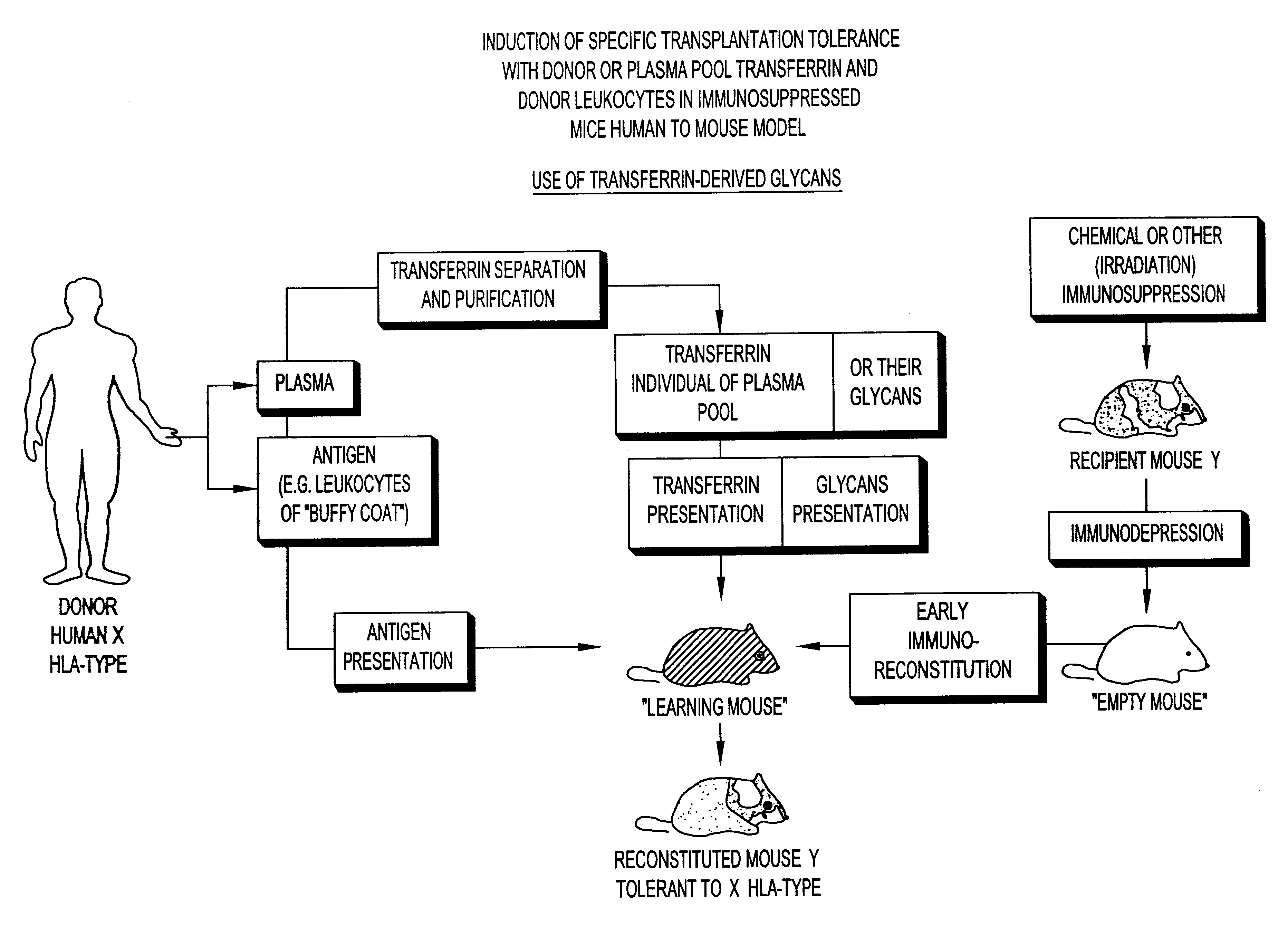Transferrin glycans composition for the induction of immune tolerance
a technology of induction of immune tolerance and transferrin glycans, which is applied in the direction of immunological disorders, antibody medical ingredients, peptide/protein ingredients, etc., can solve the problems of high incidence of secondary diseases, large variability, and difficult to reproduce obtained results
- Summary
- Abstract
- Description
- Claims
- Application Information
AI Technical Summary
Benefits of technology
Problems solved by technology
Method used
Image
Examples
Embodiment Construction
As will be seen hereafter the immuno-depression can be achieved by an administration to the host of an immunosuppressive drug, e.g., cyclosporin, prednisolone, cyclosphosphamide, etc. or by irradiation.
It has been found that in animals complete destruction of the immune-system of the recipient host undergoing bone marrow transplantation may not be necessary. The use of chemical immunosuppressants, in conjunction with the pooled transferrin-derived glycans, in the appropriate sequences of administration as discussed hereafter may thus be preferable to lethal irradiation. In leukemic patients already undergoing an immunosuppressive chemotherapy, allogeneic or xenogeneic bone marrow grafting, where hold appropriate, may even no longer require an additional administration of an immunosuppressant, in conjunction with both the administration of the pooled transferrin-derived glycans and the transplantation of bone marrow cells. Partial or total body irradiation as preferably proposed in t...
PUM
| Property | Measurement | Unit |
|---|---|---|
| temperature | aaaaa | aaaaa |
| wavelength | aaaaa | aaaaa |
| volume | aaaaa | aaaaa |
Abstract
Description
Claims
Application Information
 Login to View More
Login to View More - R&D
- Intellectual Property
- Life Sciences
- Materials
- Tech Scout
- Unparalleled Data Quality
- Higher Quality Content
- 60% Fewer Hallucinations
Browse by: Latest US Patents, China's latest patents, Technical Efficacy Thesaurus, Application Domain, Technology Topic, Popular Technical Reports.
© 2025 PatSnap. All rights reserved.Legal|Privacy policy|Modern Slavery Act Transparency Statement|Sitemap|About US| Contact US: help@patsnap.com


